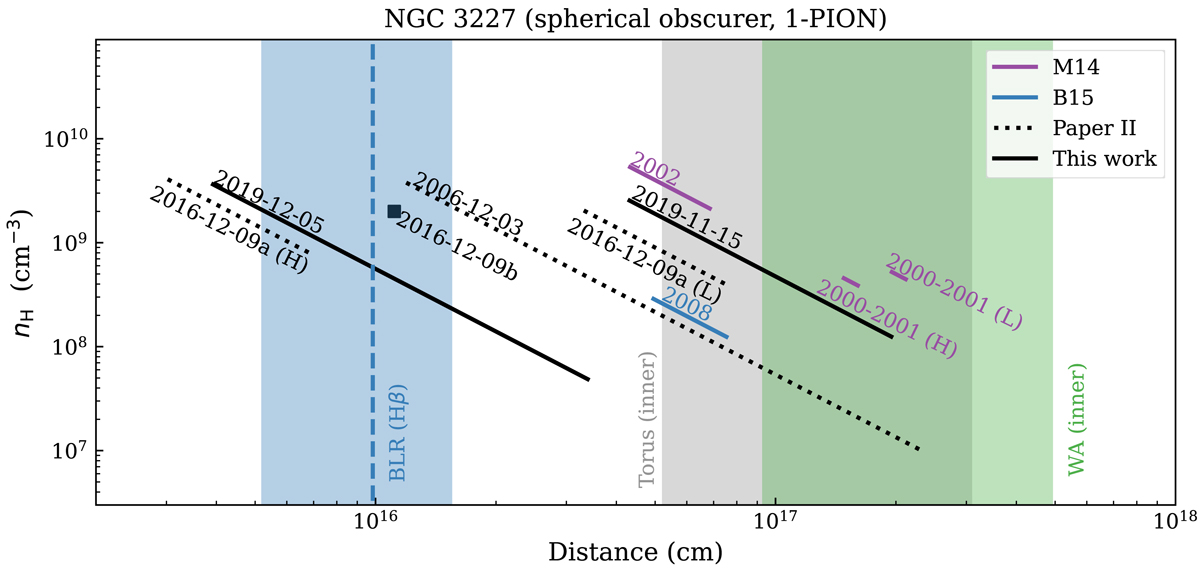Fig. 9.

Download original image
Distance and number density (nH) of obscurers in NGC 3227, assuming a spherical geometry (f = 1 in Table 4) for the obscurer. As the azimuthal to radial size ratio (f) increases, the estimated distance decreases while the density increases. M14 and B15 denotes obscuration events reported by Markowitz et al. (2014) and Beuchert et al. (2015), respectively. Shaded area in blue mark the distance of the BLR from M14 (2 − 6 ld), as well as the Hβ distance from Denney et al. (2009). Shaded area in grey mark the distance range of the inner radius of the dusty torus. The upper limit (∼107 ld) is obtained for small dust grains (Eq. (8) of Paper II). The lower limit (∼20 ld, Suganuma et al. 2006) is the reverberation measurement. Shaded area in green mark the distance of the inner most warm absorber (Paper II). When multiple obscuration events occur on the same day, we use lower case letters (a and b) to differentiate them. When the obscurer requires two components with different ionization parameters, upper case letters H and L refer to the high- and low-ionization component, respectively.
Current usage metrics show cumulative count of Article Views (full-text article views including HTML views, PDF and ePub downloads, according to the available data) and Abstracts Views on Vision4Press platform.
Data correspond to usage on the plateform after 2015. The current usage metrics is available 48-96 hours after online publication and is updated daily on week days.
Initial download of the metrics may take a while.


